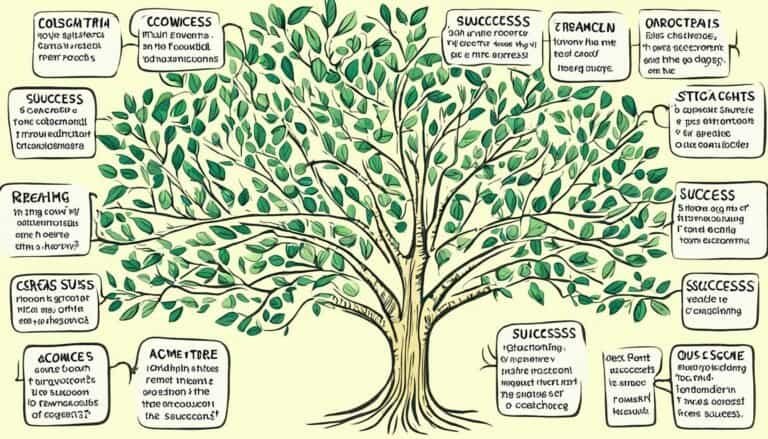How Does Coaching Support Innovation?
By sheer coincidence, you find yourself pondering the question of how coaching supports innovation. Well, let's delve into this intriguing topic together.
Coaching plays a pivotal role in fostering a culture of innovation within organizations, unlocking creative potential, and developing a growth mindset. But that's not all – it also encourages outside-the-box thinking, enhances problem-solving skills, and drives organizational change.
So, how exactly does coaching accomplish all of this? Stay tuned to uncover the secrets behind the powerful synergy of coaching and innovation.
Key Takeaways
- Coaching can help foster a culture of innovation by implementing strategies that inspire and empower employees.
- Coaching can encourage outside-the-box thinking by challenging the status quo and providing freedom to experiment and take risks.
- Coaching can enhance problem-solving skills by adopting creative thinking techniques and fostering a collaborative problem-solving approach.
- Coaching can support the development of a growth mindset by shifting perspective, providing ongoing feedback and support, and encouraging risk-taking and exploration.
Fostering a Culture of Innovation
How can you create a workplace environment that nurtures and encourages innovation? Fostering a culture of innovation is essential to promoting creativity and driving forward-thinking strategies. To cultivate this culture, organizations must implement various innovation strategies that inspire and empower employees to think outside the box.
One key approach is to encourage collaboration and open communication. By creating opportunities for individuals to share ideas and work together on projects, you can foster a sense of collective innovation. This can be achieved through brainstorming sessions, cross-functional teams, or even dedicated innovation workshops.
Another effective strategy is to provide employees with the freedom to take risks and experiment. Creating an environment where failure is seen as a learning opportunity rather than a setback encourages individuals to think creatively and explore new ideas. This can be done by implementing agile processes, allowing for quick iterations and adjustments.
Furthermore, organizations should invest in continuous learning and development programs. By providing employees with the necessary skills and knowledge, you empower them to contribute to the innovation process effectively. Encouraging curiosity, providing access to resources, and offering training opportunities can all contribute to fostering creativity within the workplace.
Unlocking Creative Potential
To unlock your team's creative potential, embrace a culture that values experimentation and embraces failure as a stepping stone towards innovation. When it comes to creative brainstorming and finding innovative solutions, creating an environment that encourages risk-taking and learning from mistakes is crucial. By fostering a culture that celebrates new ideas, encourages collaboration, and provides the freedom to explore different possibilities, you can unlock the full creative potential of your team.
To help you understand how to create such an environment, let's take a look at the following table:
| Steps to Unlock Creative Potential | Benefits |
|---|---|
| Encourage open communication | Allows for the exchange of diverse perspectives and ideas |
| Emphasize the importance of experimentation | Encourages taking risks and trying new approaches |
| Provide resources for creative exploration | Enables team members to explore and implement innovative solutions |
| Celebrate and learn from failure | Encourages a growth mindset and continuous improvement |
Developing a Growth Mindset
Embrace the mindset of continuous growth and adaptability to unlock your team's full creative potential. Developing a growth mindset is crucial in fostering innovation within your team. It involves developing resilience and embracing challenges as opportunities for growth. When faced with obstacles, encourage your team to see them as learning experiences rather than setbacks. By shifting their perspective, they can develop the resilience needed to overcome challenges and continue to innovate.
To foster a growth mindset, provide your team with ongoing feedback and support. Encourage them to take risks and explore new ideas without fear of failure. Remind them that setbacks are a natural part of the innovation process and that learning from them is essential for growth. Create an environment where mistakes are seen as stepping stones towards success rather than signs of incompetence.
Furthermore, it's important to set high expectations for your team. Challenge them to push their boundaries and think outside the box. Encourage them to seek out new knowledge and skills to enhance their abilities. By continuously striving for improvement, your team can develop a growth mindset that fuels their creativity and innovation.
Encouraging Outside-the-Box Thinking
As you embrace a growth mindset and foster innovation by developing resilience and embracing challenges as learning experiences, it's time to encourage your team to think outside the box. To truly drive innovation and creativity, it's important to create an environment that welcomes disruptive ideas and unconventional solutions.
Start by encouraging your team to challenge the status quo. Encourage them to question existing processes, systems, and assumptions. By doing so, they can identify gaps and opportunities for improvement. Encourage them to explore different perspectives and consider diverse viewpoints. This won't only broaden their horizons but also spark innovative thinking.
Provide your team with the freedom to experiment and take risks. Encourage them to explore uncharted territories and pursue ideas that may seem unconventional at first. By granting autonomy and allowing room for failure, you create an environment where creativity can flourish.
Furthermore, foster collaboration among team members. Encourage them to engage in brainstorming sessions and open discussions. By bringing together different skill sets and perspectives, you can create a fertile ground for disruptive ideas to emerge.
Lastly, celebrate and recognize innovative thinking. Acknowledge and reward individuals who come up with unconventional solutions or propose disruptive ideas. By doing so, you reinforce the importance of thinking outside the box and inspire others to do the same.
Enhancing Problem-Solving Skills
Are you looking to enhance your problem-solving skills?
In today's fast-paced and ever-changing business environment, creative thinking techniques are essential. By adopting these techniques, you can approach problems from different angles, allowing for innovative solutions to emerge.
Additionally, fostering a collaborative problem-solving approach can harness the collective intelligence of your team, leading to more effective and efficient problem-solving outcomes.
Creative Thinking Techniques
To enhance your problem-solving skills, explore creative thinking techniques that foster strategic and adaptive approaches. Creative problem solving is essential for developing an innovative mindset, allowing you to find unique and effective solutions to complex challenges. By using these techniques, you can break free from traditional thinking patterns and explore new possibilities. Here are five powerful creative thinking techniques to consider:
| Technique | Description |
|---|---|
| Brainstorming | Generate a multitude of ideas without judgment, encouraging free thinking and collaboration. |
| Mind Mapping | Visualize ideas and concepts using diagrams, allowing you to see connections and explore different perspectives. |
| SCAMPER | Utilize a set of prompts (Substitute, Combine, Adapt, Modify, Put to another use, Eliminate, Reverse) to stimulate creative thinking. |
| Lateral Thinking | Approach problems from unconventional angles, encouraging non-linear thinking and generating innovative solutions. |
| Reverse Thinking | Start with the desired outcome and work backward, challenging assumptions and uncovering new approaches. |
Collaborative Problem-Solving
Enhance your problem-solving skills by engaging in collaborative problem-solving, a dynamic approach that fosters creative thinking and strategic solutions. Through group dynamics and the application of design thinking principles, collaborative problem-solving offers a multitude of benefits:
- Diverse Perspectives: Working with a team allows you to tap into different viewpoints and experiences, broadening your understanding of the problem at hand. This diversity of perspectives helps generate unique and innovative solutions.
- Synergy: By combining the collective intelligence of the group, collaborative problem-solving leverages the strengths of each team member. This synergy leads to more effective problem-solving and increases the chances of finding breakthrough solutions.
- Increased Creativity: Group collaboration stimulates creativity through brainstorming sessions and open discussions. Sharing ideas and building upon each other's contributions sparks new insights and possibilities.
- Iterative Approach: Collaborative problem-solving embraces an iterative process, where ideas are tested, refined, and improved upon. This iterative approach allows for continuous learning and adaptation, leading to more robust and effective solutions.
Engaging in collaborative problem-solving not only enhances your problem-solving skills but also cultivates a culture of innovation within teams and organizations.
Driving Organizational Change
Driving organizational change requires a strategic and adaptive approach to coaching for innovation. As a leader, you play a crucial role in driving transformational change within your organization. By implementing innovation strategies, you can create an environment that fosters creativity, collaboration, and growth.
To drive organizational change effectively, you need to have a clear vision and a well-defined strategy. A strategic approach involves identifying the areas where change is needed and developing a plan to address them. This may include setting clear goals, defining key performance indicators, and establishing a timeline for implementation.
However, it's important to remain adaptive in your approach. Change is a dynamic process, and unexpected challenges may arise along the way. By being flexible and open to new ideas, you can adjust your strategy and overcome obstacles that may hinder progress.
Coaching for innovation is a powerful tool in driving organizational change. By providing guidance and support to your team members, you can empower them to embrace change and contribute to the innovation process. This may involve helping them develop new skills, encouraging experimentation, and fostering a culture of continuous learning.
Conclusion
In conclusion, coaching plays a crucial role in supporting innovation by fostering a culture of creativity and growth mindset.
For example, a case study showcased how a tech startup utilized coaching to encourage outside-the-box thinking among its employees. As a result, they were able to develop groundbreaking solutions and stay ahead of the competition.
By enhancing problem-solving skills and driving organizational change, coaching empowers individuals and teams to unleash their full innovative potential.
Embrace coaching and watch your organization thrive in the ever-evolving landscape of innovation.







